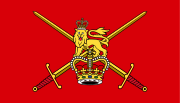
The Royal Logistic Corps provides logistic support functions to the British Army. It is the largest Corps in the Army.

The Royal Corps of Signals is one of the combat support arms of the British Army. Signals units are among the first into action, providing the battlefield communications and information systems essential to all operations. Royal Signals units provide the full telecommunications infrastructure for the Army wherever they operate in the world. The Corps has its own engineers, logistics experts and systems operators to run radio and area networks in the field. It is responsible for installing, maintaining and operating all types of telecommunications equipment and information systems, providing command support to commanders and their headquarters, and conducting electronic warfare against enemy communications.

The Corps of Royal Electrical and Mechanical Engineers is the maintenance arm of the British Army that maintains the equipment that the Army uses. The corps is described as the "British Army's professional engineers".

The Royal Military Police (RMP) is the corps of the British Army responsible for the policing of army service personnel, and for providing a military police presence both in the UK and while service personnel are deployed overseas on operations and exercises. Members of the RMP are often known as 'Redcaps' because of the scarlet covers on their peaked caps and scarlet coloured berets.

The Royal Gurkha Rifles (RGR) is a rifle regiment of the British Army, forming part of the Brigade of Gurkhas. Unlike other regiments in the British Army, RGR soldiers are recruited from Nepal, which is neither a dependent territory of the United Kingdom nor a member of the Commonwealth.
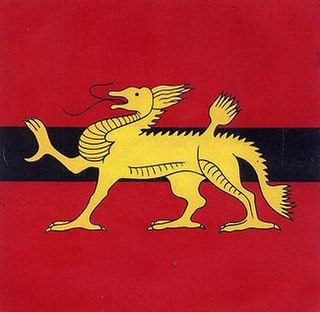
The Hong Kong Military Service Corps (HKMSC) was a British army unit and part of the British garrison in Hong Kong. Throughout the history of Hong Kong, it has been the only regular British army unit raised in the territory made up almost entirely of Locally Enlisted Personnel (LEP).

The Royal Army Pay Corps (RAPC) was the corps of the British Army responsible for administering all financial matters. It was amalgamated into the Adjutant General's Corps in 1992.
The Royal Army Educational Corps (RAEC) was a corps of the British Army tasked with educating and instructing personnel in a diverse range of skills. On 6 April 1992 it became the Educational and Training Services Branch (ETS) of the Adjutant General's Corps.

The uniforms of the British Army currently exist in twelve categories ranging from ceremonial uniforms to combat dress. Uniforms in the British Army are specific to the regiment to which a soldier belongs. Full dress presents the most differentiation between units, and there are fewer regimental distinctions between ceremonial dress, service dress, barrack dress and combat dress, though a level of regimental distinction runs throughout.

The Military Provost Staff are the Army's specialists in custody and detention, providing advice inspection and surety within custodial establishments. The MPS form part of the Adjutant General's Corps and are based at the Military Corrective Training Centre (MCTC) in Colchester, Essex.

The Military Provost Guard Service (MPGS) is responsible for maintaining physical security at British Armed Forces locations throughout Great Britain. It is one of three constituent units of the Adjutant General's Corps Provost Branch. The Provost branch is the responsibility of the Provost Marshal who is a Brigadier from the Royal Military Police. The MPGS also works alongside the unarmed Ministry of Defence Guard Service (MGS). In Northern Ireland, armed security at Ministry of Defence establishments is provided by the uniformed civilian Northern Ireland Security Guard Service in a similar manner to that of the MPGS in Great Britain.

Provosts are military police (MP) whose duties are policing solely within the armed forces of a country, as opposed to gendarmerie duties in the civilian population. However, many countries use their gendarmerie for provost duties.
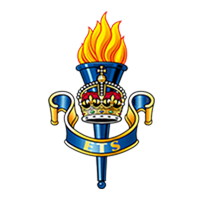
The Educational and Training Services form part of the Adjutant General's Corps and have done since 1992 when this Corps of the British Army was formed. Their remit is to continue the general education of soldiers and officers alike, as well as the actual military training of the soldiers of the Army.

Worthy Down Camp is a tri-service establishment near Winchester, in Hampshire, England. It forms part of the wider Winchester Garrison and houses the headquarters of the Defence College of Logistics, Policing and Administration (DCLPA), as well as the headquarters of the Royal Logistic Corps and Adjutant General's Corps. DCLPA provides logistic support, policing, guarding, personnel administration and leadership training to all three armed services. The site is north of Winchester, between the villages of South Wonston and Kings Worthy.
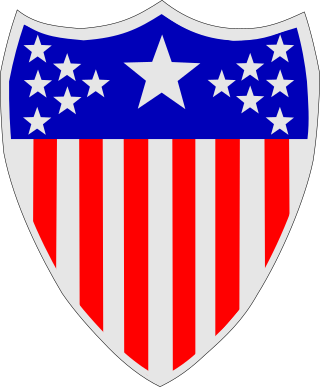
The Adjutant General's Corps, formerly the Adjutant General's Department, is a branch of the United States Army first established in 1775. This branch provides personnel service support by manning the force, providing human resources services, coordinating personnel support, Army band operations, and recruiting and retention. The objective of the Adjutant General Corps is to "maximize operational effectiveness of the total force by anticipating, manning, and sustaining military operations. HR support operations accomplish this by building, generating, and sustaining the force providing combatant commanders the required forces for missions and supporting leaders and Soldiers at all levels."
Winchester's Military Museums are a group of six independent and related regimental museums in Peninsula Barracks and Lower Barracks in Winchester, Hampshire.
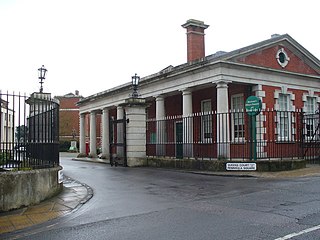
The Adjutant General's Corps Museum, also known as The AGC Museum is a visitor attraction at Peninsula Barracks in Winchester. It displays the history of the Adjutant General's Corps and its antecedents through objects, text, photographs, and dioramas.

The page contains the current structure of the British Army. The British Army is currently being reorganised to the Future Soldier structure.
This is a list of units of the British Army's Royal Engineers.


